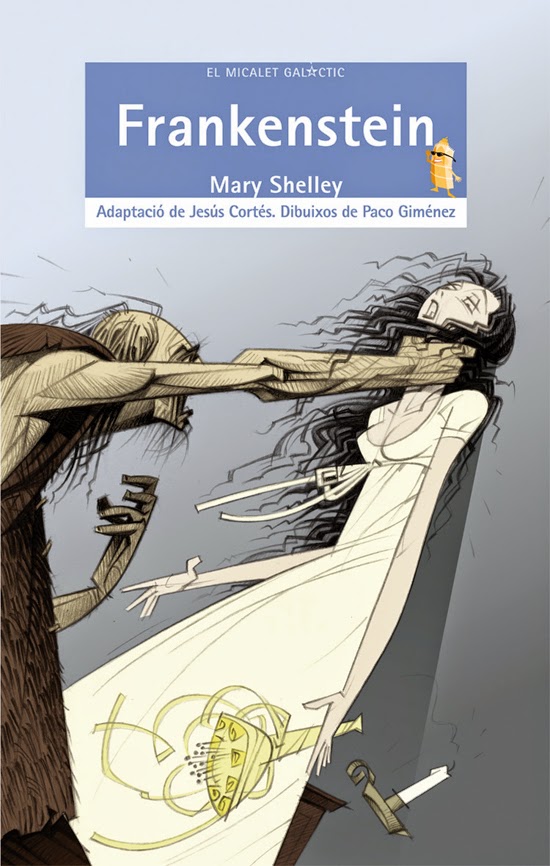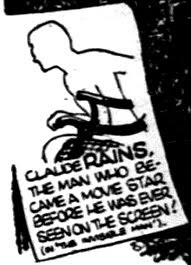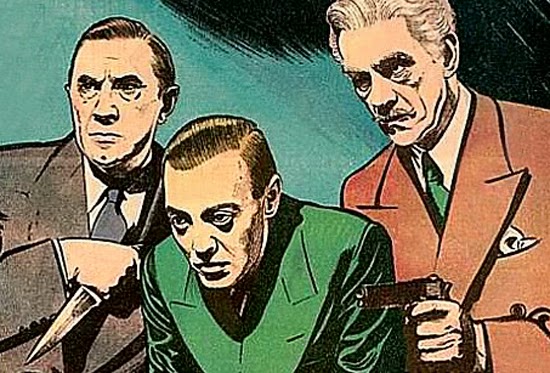The gentleman with the exploding mustache is Senator Frankenstein Fishface, a radio personality of the early Forties. A self-professed “foolosopher”, The Senator ran for President on the Pussyfooter’s Party ticket and promoted nudism under the auspices of the Open Pore Nudist Cult of Bareback Gulch, Pa. He also ran for Mayor of New York, promising “
to put a radio, overstuffed furniture and a featherbed in every jail cell in our city. That's so our jails will attract a better class of people!"The Senator was Elmore Vincent (1908-2000), a Texas-born entertainer who first broke into show business as “The Texas Troubadour”. Relocating to Seattle, Vincent got into radio in 1929 on KJR’s Mardi Gras, a daily, 90-minute variety program, appearing as “The Northwest Shanty Boy”, singing lumberjack songs with yodel accompaniment. Having to support his family through the dark days of the Great Depression, Vincent expanded his repertoire, performing comic sketches as a blowhard, word-mangling politician. The show’s director, Ivan Ditmars came up with the name “Senator Fishface” and it is assumed that it was Vincent who added the Frankenstein surname.
In 1934, NBC came calling and persuaded Vincent to bring his act to their San Francisco station. Going out over the Blue Network on the daily Carefree Carnival show, Senator Frankenstein Fishface was a nationwide hit. When the show was cancelled in 1936, Vincent took Frankenstein Fishface on tour, performing live in trademark mustache, a baggy suit and a crumpled high hat. Along the way, he voiced “Pa Scarecrow” for Tex Avery in a Warner’s Merrie Melodies cartoon, I’D LOVE TO TAKE ORDERS FROM YOU (1936).
In New York, Vincent hooked up with NBC again for another 2-year stint, now in his own series co-starring writer-comic Don Johnson as “Professor Willbert G. Figgsbottle”. As a measure of the Frankenstein Fishface character’s enduring popularity, Vincent was recruited to appear in a pioneering test program of RCA’s television system in 1937, beaming out to all of 60 TV sets in New York, live from Radio City. It was Senator Frankenstein Fishface last hurrah. In years to come, Vincent occasionally revisited the character under new names. He was called “Durwood Zinkafoose” in 1949, and “Senator Bolivar Gassaway” in 1961, otherwise Vincent developed a new specialty playing crusty old men. In ’44-45, he played Phineas Peabody on radio’s Lum and Abner, and soon transitioned to television, where he played grandpappys, old janitors and farmer types on classic TV series like DRAGNET, SKY KING, TALES OF WELLS FARGO and THE REAL McCOYS. He played Santa Claus in a 1955 episode of HIGHWAY PATROL and Doc Appleby on THE DUKES OF HAZZARD in 1982. His last TV work saw him play old-timers, including the recurring character “Floyd” on LITTLE HOUSE ON THE PRAIRIE, 1980 to ’82.
Elmore Vincent never quite retired, reprising his old man character — in actual old age — for Dinner Theater plays and speaking engagements. He passed away in 2000 at 91.
Senator Frankenstein Fishface was a precursor of the double-talking, comically illogical experts and phony politicians such as Red Skelton’s San Fernando Red, and satirists the likes of Pat Paulsen, Prof. Irwin Corey and even Brother Theodore. Plugging “Frankenstein” into the character’s name was good fun and symbolic of the name's ubiquitousness.


































































